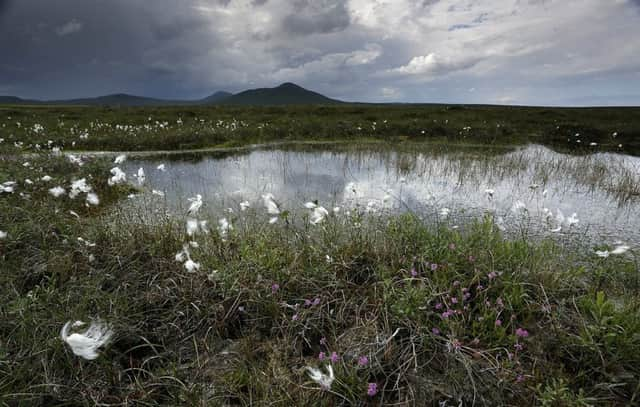Wind farm can ‘restore Flow Country peatland’


A public local inquiry (PLI) into the highly controversial development will reopen today in Sutherland. RSPB Scotland claims the Strathy South scheme would cause harm to the peatland habitats and the birds they support.
They allege the wind farm could take 21 years to save the amount of carbon which would be released during its construction. They claim all the funds needed to carry out full restoration of the site could be raised by just two commercial scale turbines, rather than 39.
Advertisement
Hide AdAdvertisement
Hide AdThe Strathy South project is in the heart of the peatlands of Caithness and Sutherland – one of the most important expanses of blanket bog in Europe.
However, the area was damaged by non-native commercial forestry planting in the 1980s. SSE proposes removing a large area of trees and paying for restoration of the peatland while developing the wind farm.
The Strathy South application triggered a PLI on the basis of concerns maintained by Scottish Natural Heritage (SNH) on two bird species – greenshank and red-throated diver.
But ornithology specialist Martin Scott, who will give evidence for SSE, said: “The very detailed analysis of the Strathy South site by professional ecologists since 2003 has concluded the approach adopted by SNH is over-precautionary.
“All other bird and habitat issues have been successfully concluded, except in relation to greenshank and red-throated divers. There is no recorded evidence that these birds are susceptible to collisions with wind turbines, and the benefits of commercial forestry removal and peatland restoration proposed by SSE would be positive for habitats, birds and other wildlife.
“Our detailed investigations have concluded that no concerning impacts are likely from the Strathy South project, and that overall it is guaranteed to deliver a significant net gain for the environment.”
One of the UK’s leading experts on the impact of wind farms on peatland, Dr Tom Dargie, has confirmed there are benefits to be gained from restoring forestry-damaged peat back to bog habitat, including renewed capture of atmospheric carbon.
Dr Dargie said: “RSPB is a valued conservation charity that does much good work through its reserves, research and in environmental education.
Advertisement
Hide AdAdvertisement
Hide Ad“We are particularly disappointed therefore that on this occasion, key aspects of the project are being misreported, including the carbon payback figures put into the public domain. The true likely carbon payback time as shown by the SSE submissions is around 1-2 years.”